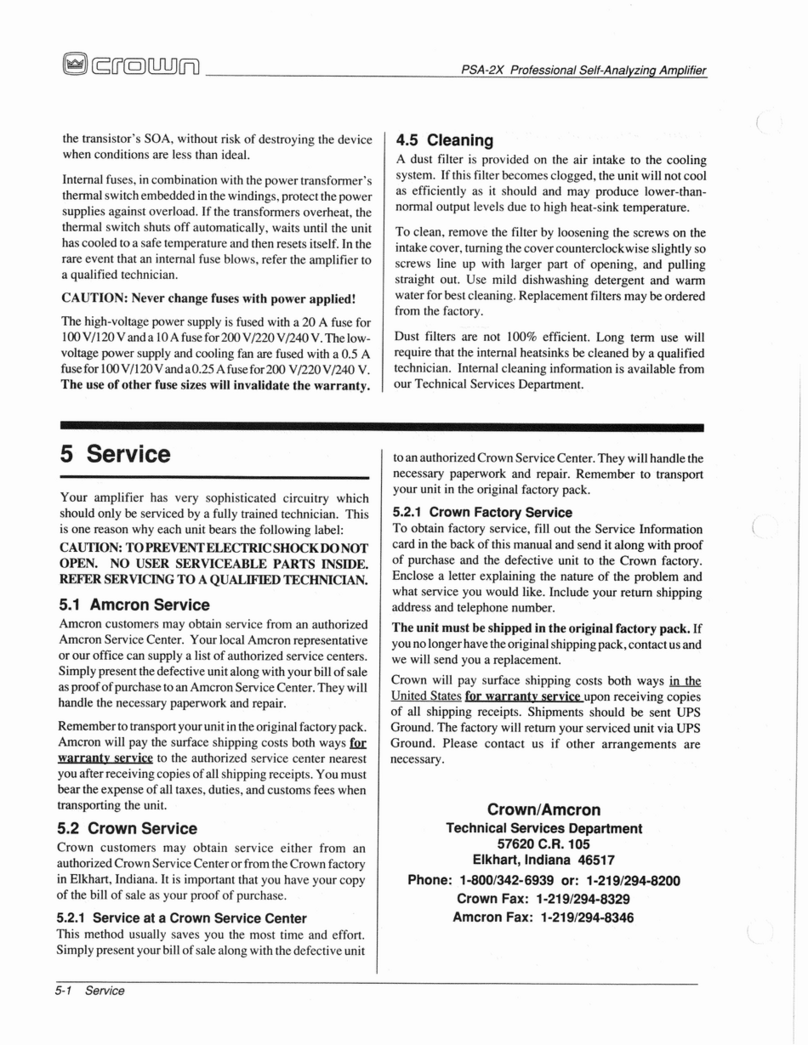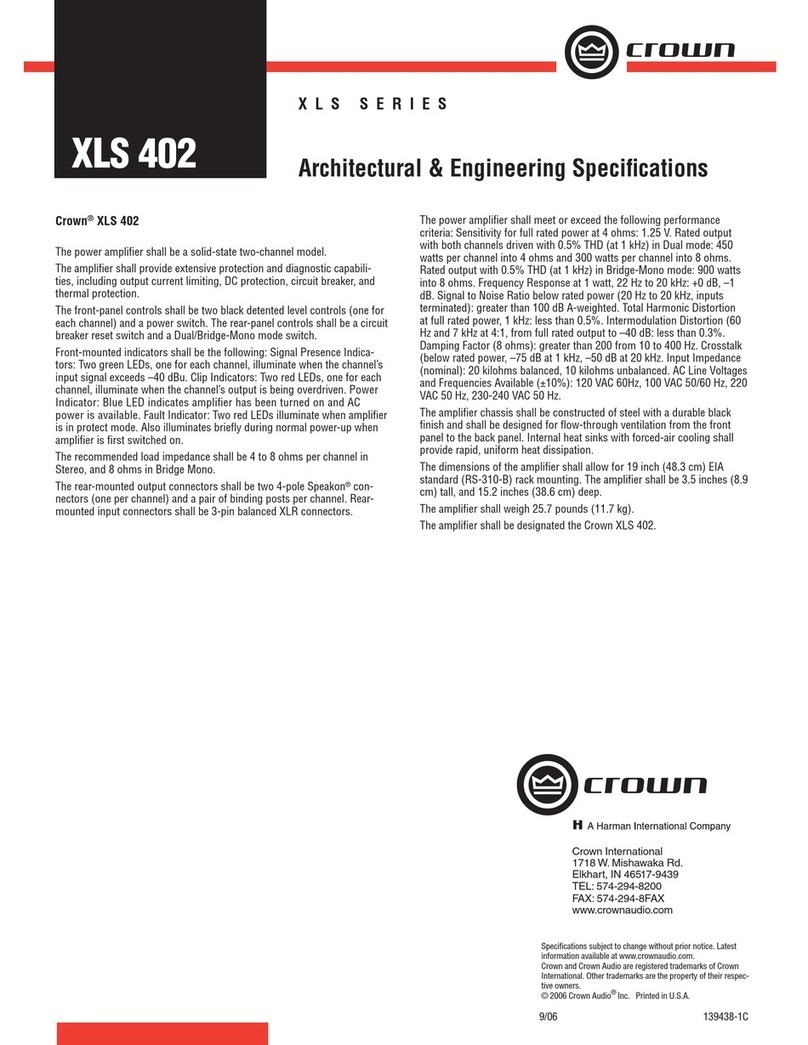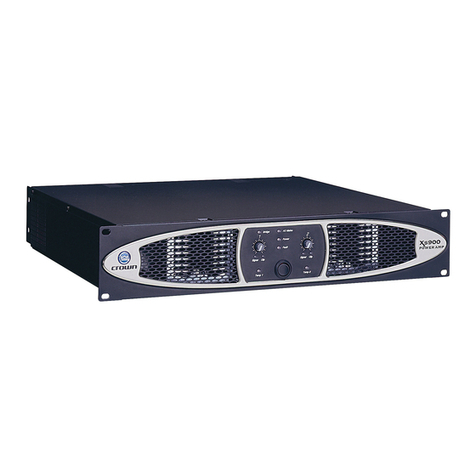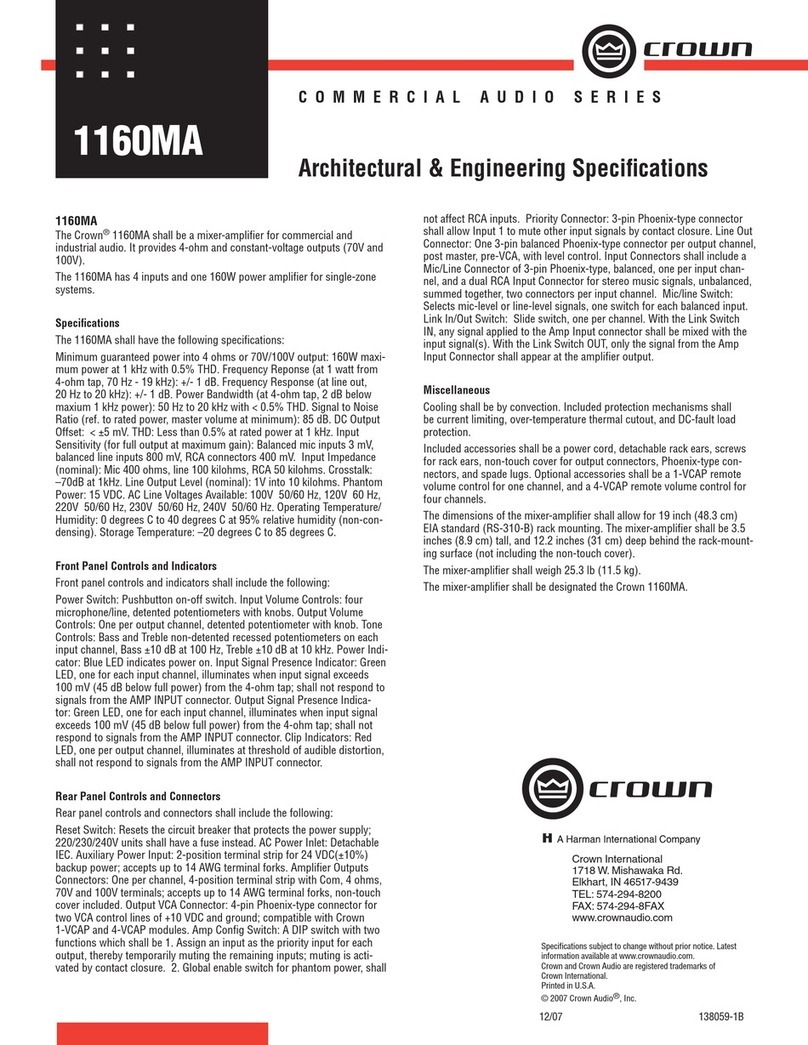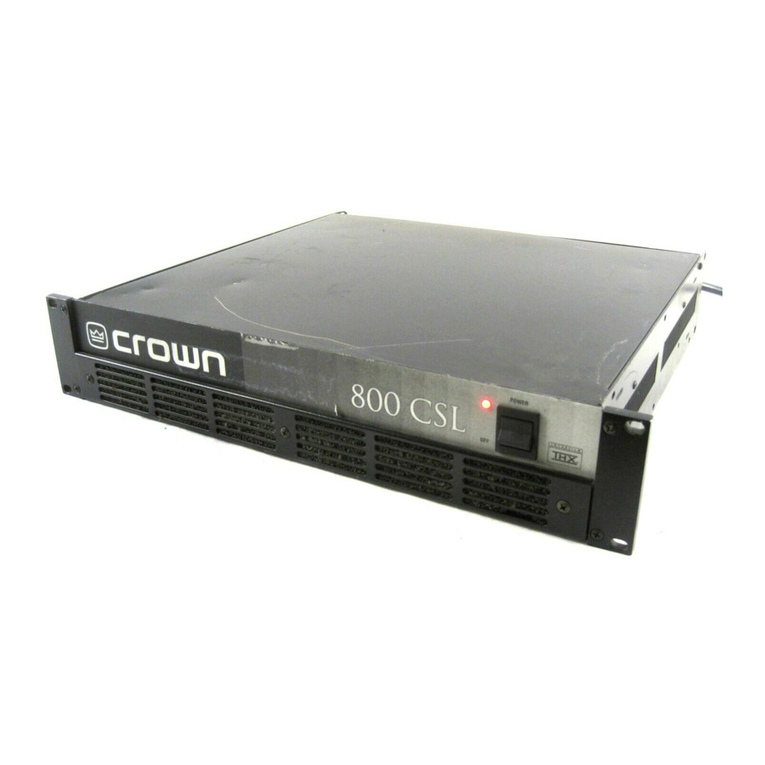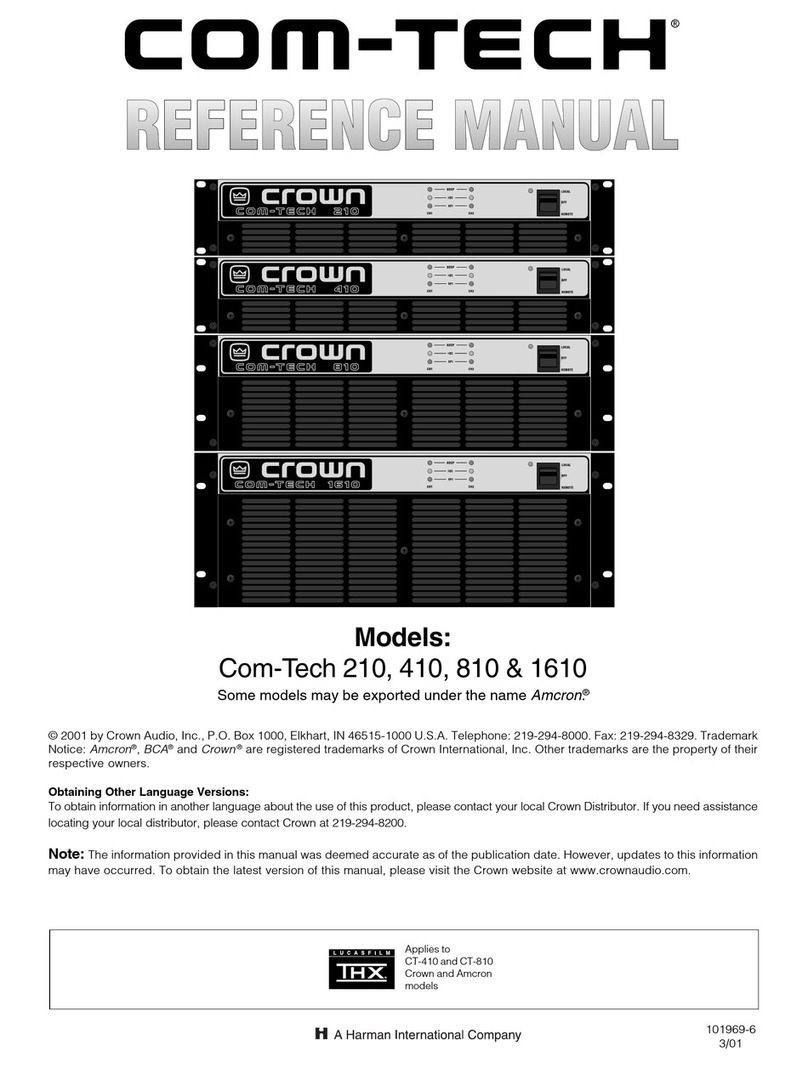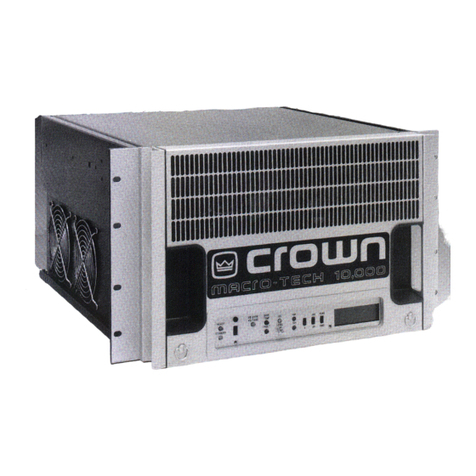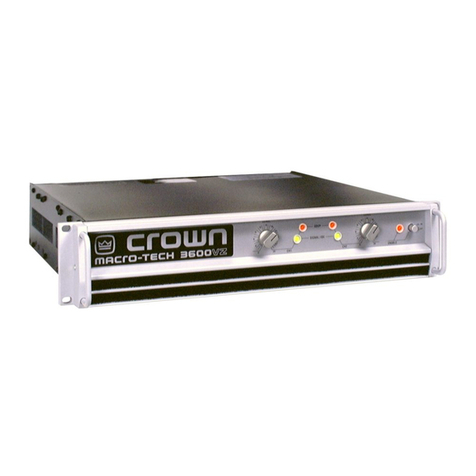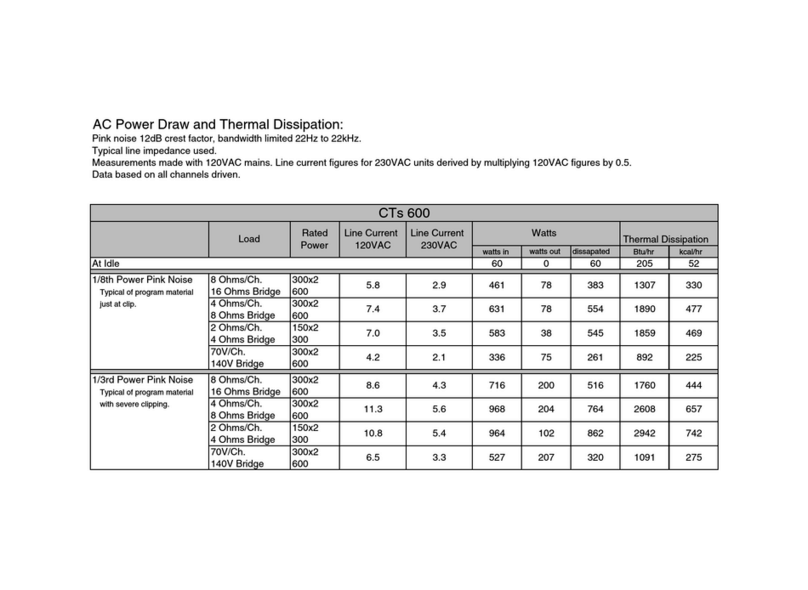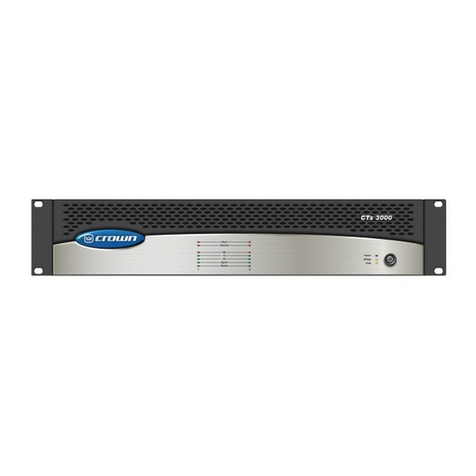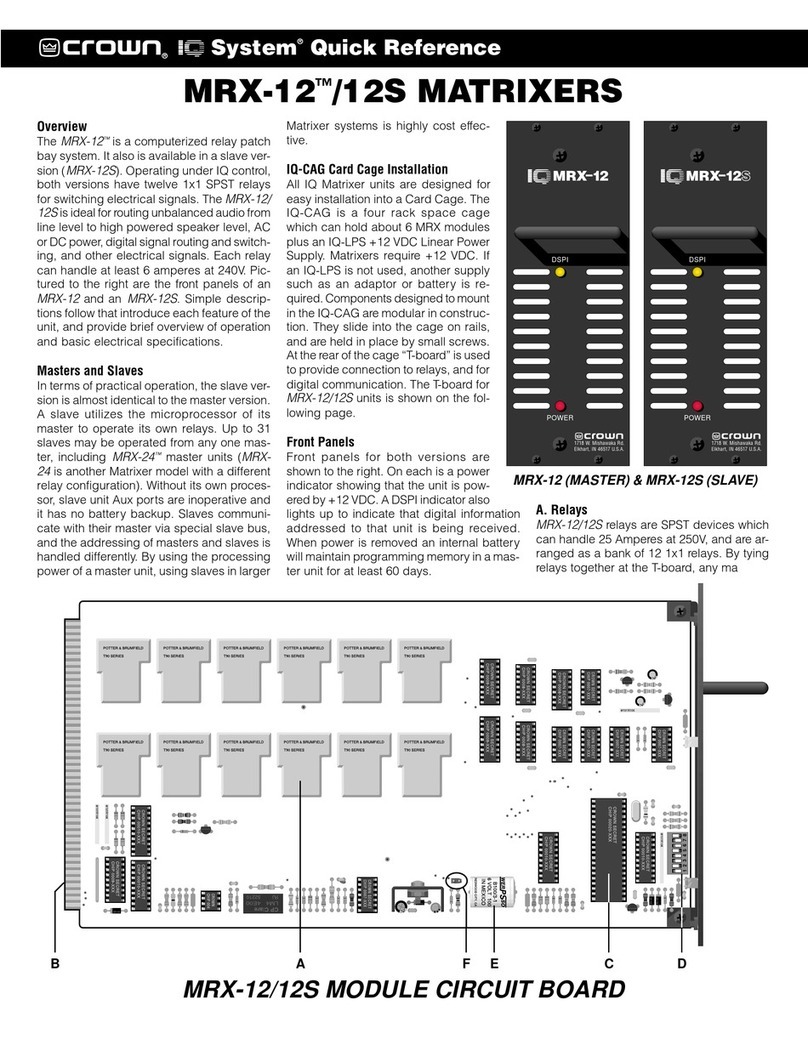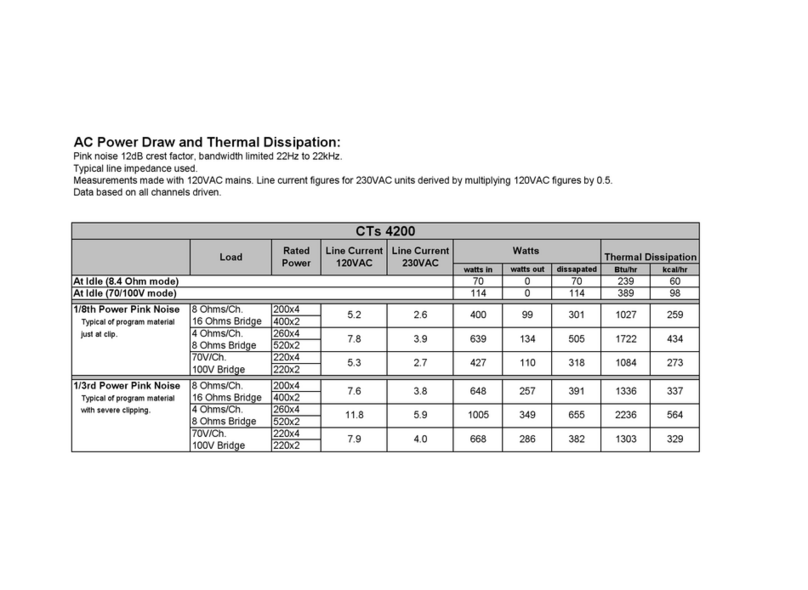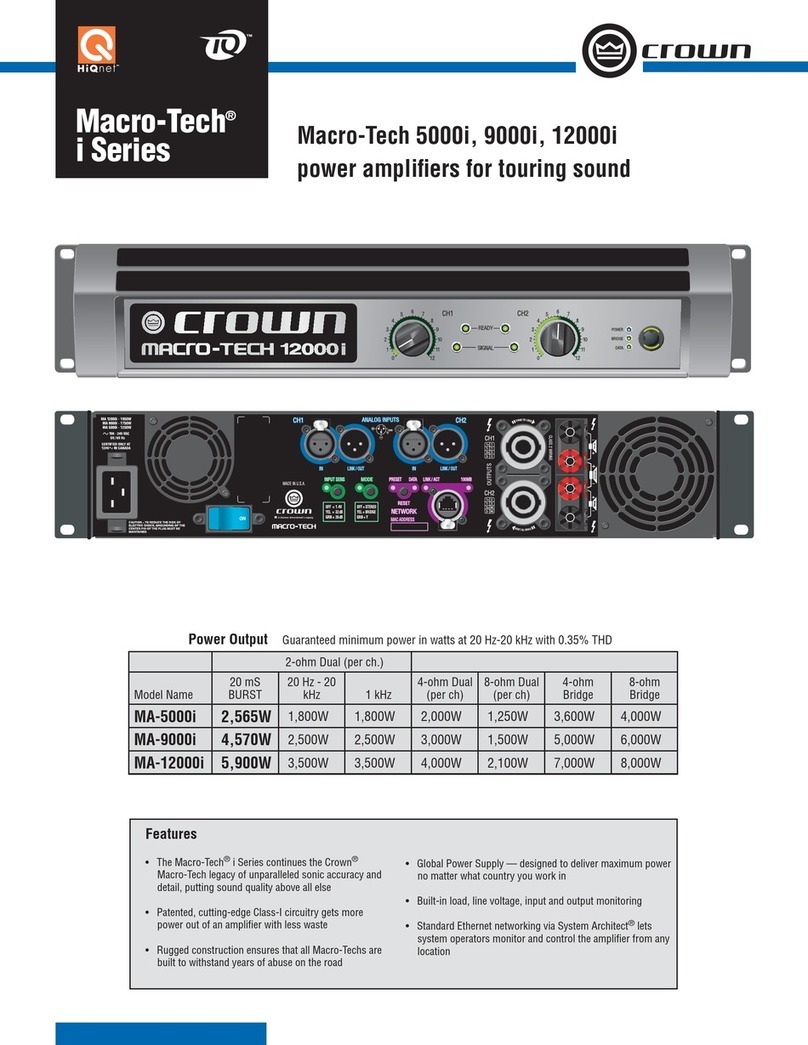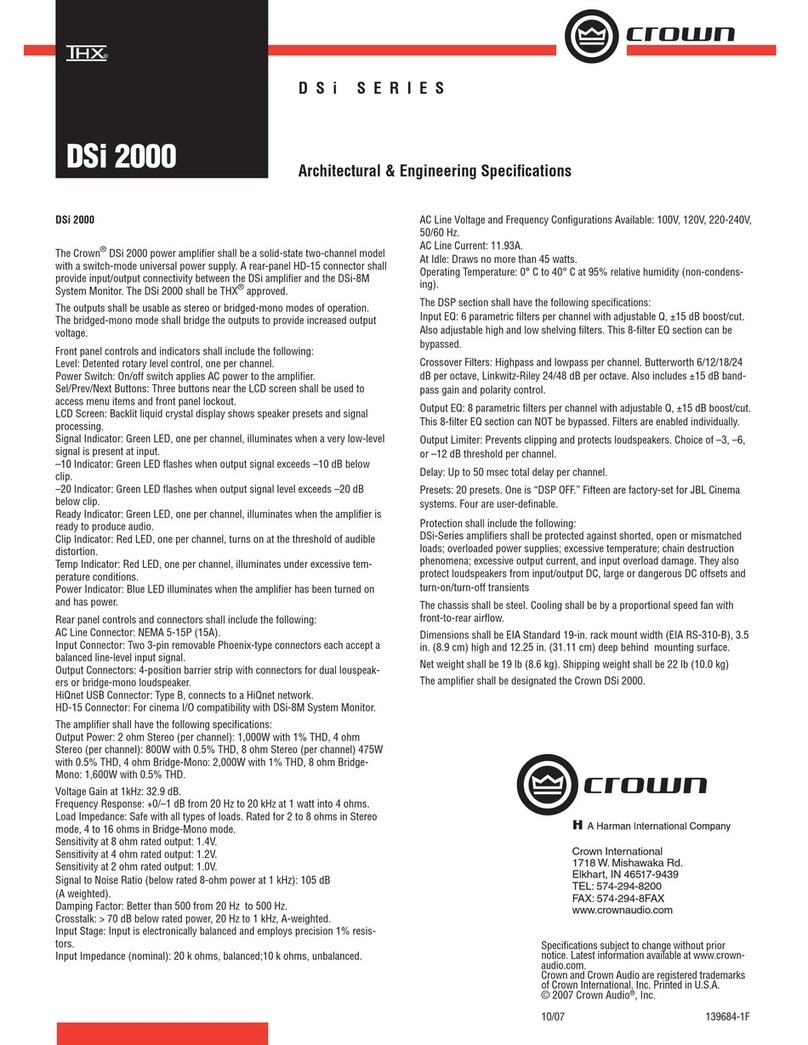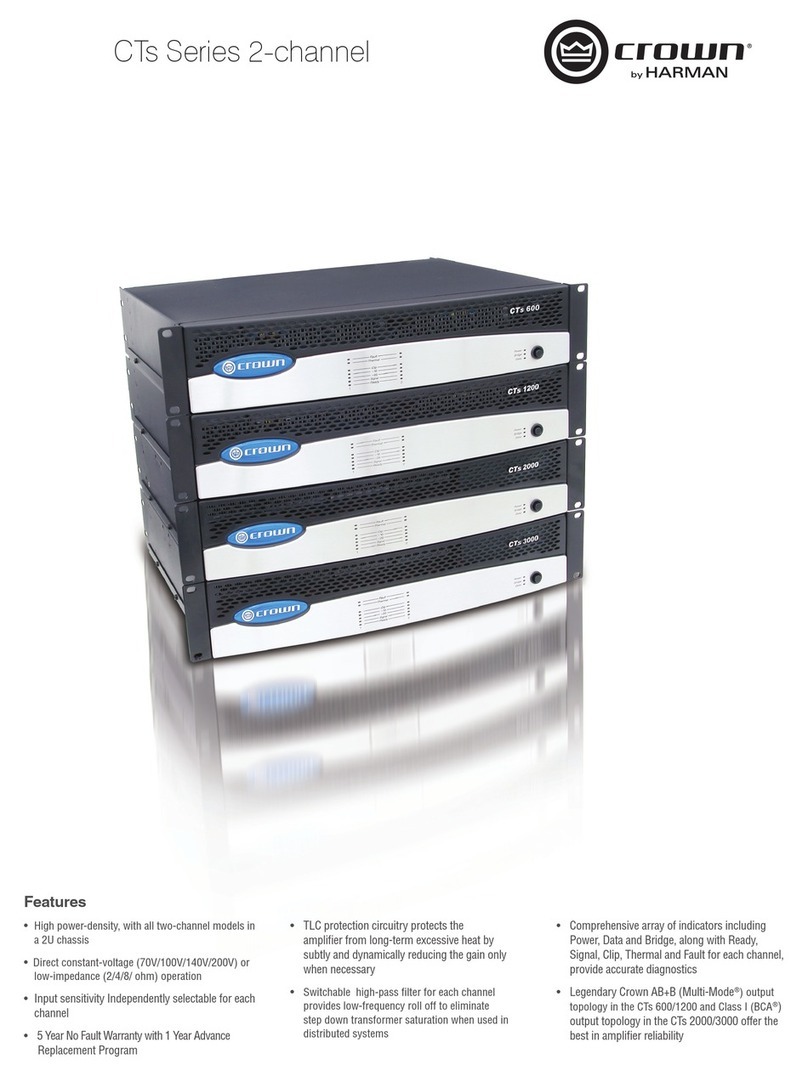
Micro-Tech 1200 Amplifier Service Manual
14
TEST 4: AC POWER DRAW
Spec: 100 Watts maximum quiescent.
Initial Conditions: Controls per standard.
Procedure: With no input signal and no load, measure
AC line wattage draw. If current draw is excessive,
check for high AC line voltage or high bias voltage.
TEST 5: COMMON MODE REJECTION
Spec at 100 Hz: –70 dB.
Spec at 20 kHz: –50 dB.
Initial Conditions: Controls per standard.
Procedure: Noload. Inject a0dBu (.775VRMS) 100Hz
sinewaveintoeachchannel,onechannelatatime,with
invertingandnon-invertinginputsshortedtogether.At
the output measure less than –44 dBu (4.9mVRMS).
Injecta0dBu20kHzsinewaveintoeachchannel,one
channel at a time, with inverting and non-inverting
inputs shorted together. At the output measure less
than–24dBu(49mVRMS).ForMainModuleswithboard
numberslowerthanD7993-5adjustN100andN200to
calibrateCMR.ForMainModuleswithboardnumberD
7993-5orgreateradjustR921andR1021.
TEST 6: VOLTAGE GAIN
Spec 26dB Gain: Gain of 20.0 ±3%.
Spec 0.775V Sensitivity: ±6%.
Spec 1.4V Sensitivity: +12%/–6%.
Initial Conditions: Controls per standard.
Procedure:Noloadconnected.Injecta0.775VAC1kHz
sine wave with the Sensitivity Switch in the 26 dB
position.Measure15.5VAC±0.5 VAC at the amplifier
output. Inject a 0.775 VAC 1 kHz sine wave with the
SensitivitySwitchinthe0.775Vposition.Measure50.6
VAC±3VACattheamplifieroutput.Injecta1.4VAC1
kHz sine wave with the Sensitivity Switch in the 1.4V
position.Measure50.6VAC+6/–3VACattheamplifier
output. Return the Sensitivity Switch to the 26 dB
position.
TEST 7: PHASE RESPONSE
Spec: ±10° from 10 Hz to 20 kHz at 1 Watt.
InitialConditions:Controlsperstandard,8ohmloadon
eachchannel.
Procedure:Injecta1kHzsinewaveandadjustfor1Watt
output (2.8 VAC). Check input and output signals
against each other, input and output signals must be
within10° of each other.
TEST 8: LEVEL CONTROLS
Electrical Checkout Procedures
Spec: Level controlled by level controls.
Initial Conditions: Controls per standard.
Procedure:NoLoad.Injecta1kHzsinewave.Withlevel
controls fully clockwise you should see full gain. As
controlsarerotatedcounterclockwise,observesimilar
gainreductionineachchannel.Whencomplete,return
level controls to fully clockwise position.
TEST 9: CURRENT LIMIT
Spec: Current Limit at 30 Amps, ±2 Amps
Initial Conditions: Controls per standard.
Procedure:Loadeachchannelto1Ohm.Injecta1kHz
differentiated (or 10% duty cycle) square wave. See
figure4.Increaseoutputleveluntilcurrentlimitoccurs.
Current limit should occur at 30 ±2 Amps (30 Vpk).
Observeclean(nooscillations)currentclipping.
In Out
.047 uF
1K Ohm
Figure 4. Differentiator Circuit
TEST 10: SLEW RATE & 10 KHZ SQUARE WAVE
Spec: 13 - 15 V/µS.
Initial Conditions: Controls per standard.
Procedure:Loadeachchannelto8ohms.Injecta10kHz
square wave to obtain 65 volts zero-to-peak at each
output.Observetheslopeofthesquarewave.Itshould
typicallymeasure13to15V/µS.Also,thesquarewave
must not include overshoot, ringing, or any type of
oscillation.
TEST 11: CROSSTALK
Spec: -60dB at 20 kHz.
Initial Conditions: Controls per standard. Terminate
input of channel not driven with 600 ohms.
Procedure:8ohmloadoneachchannel.Injecta20kHz
sinewaveintotheChannel1inputandincreaseoutput
level to 33 VAC. Measure less than 33 mVAC at the
outputof Channel2. Injecta 20kHz sinewave intothe
Channel 2 input and increase output level to 33 VAC.
Measurelessthan33mVACattheoutputofChannel1.
TEST 12: OUTPUT POWER
Spec at 8 Ohm Stereo: >= 320W at 0.1% THD.
